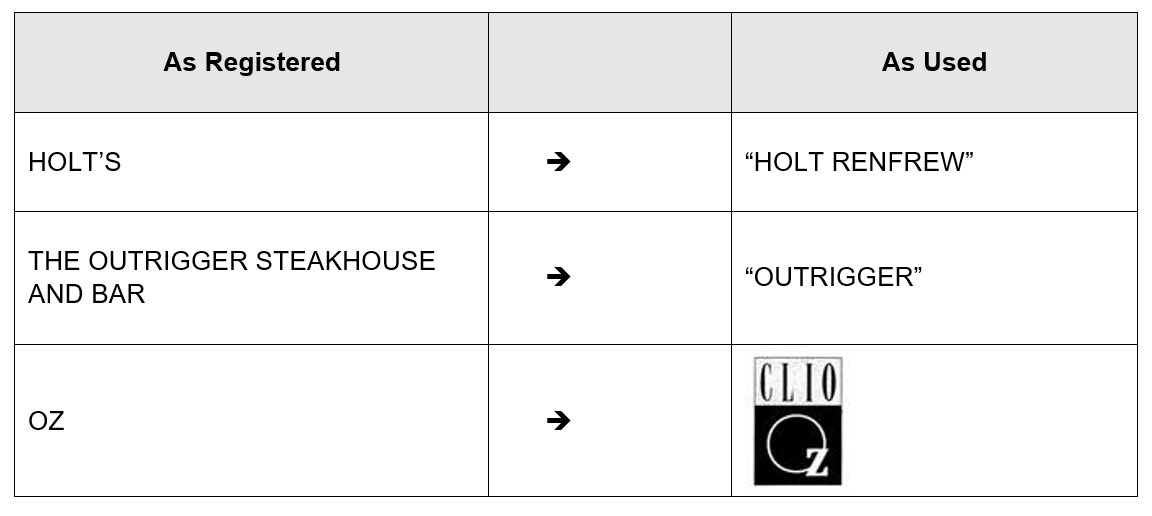Trying some healthy habits in 2024? Your trademarks want you to do the same!
A trademark has value when it is distinct and enforceable. Even registered marks can lose value if proper “trademark hygiene” is not followed throughout the year. Now is the perfect time for a check-up on the status of your company’s
brands.
Read on for five simple measures to help ensure your portfolio offers the protection you and your customers expect.
Check for internet squatters
Registering a domain name is easy – so easy a troll can do it. Make sure no troublemakers are misdirecting customers away from your website (or worse) by searching for web domains that contain your trademarks. The most common top-level domains worth checking are:
- .com
- .ca
- .net
- .org
- .edu
There are around 1500 top-level domains in total, including some that may be important in your line of business (e.g. .shop, .sale, .food, .flowers, .global). If important domains are available, consider registering them now. If you find something concerning, it may be possible to acquire or recover the domain in a cost-effective manner through legal channels.
Monitor inadvertent evolutions in trademark use
A brand can change with time. A trademark registration is not so flexible. While small variations can be okay, many owners realize too late that the marks they now use no longer resemble what they protected years ago. This can not only render registrations
vulnerable to cancellation for non-use, but also make them more difficult to enforce.
Changes like these were considered okay:

Changes like these were not okay:

If your trademark is revamped with extra material around it, without a TM, ® or MD sign in the right place, or in a manner that seems like it merely describes your products or services, it may be worth scheduling a call with counsel.
Evaluate your top brands for potential new applications
Best practice would dictate that the launch of every product line, new service offering, and new advertising campaign be accompanied by proper clearance searches, and if favourable, new trademark applications. Once secured, a trademark registration gives
you the exclusive right to use that mark throughout Canada and shields you against claims of infringement.
Take this time to double-check that you have filed to protect all your most important brands. Remember that trademarks can take many forms, including company names, product and service names, logos, slogans, packaging, advertising jingles, colours and more.
Confirm your licenses are in order
If you are using a trademark owned by somebody else, or letting somebody else use your trademark, get that license down on paper and ensure that the use conforms with the terms of the license. Unlicensed use – even by a related company – can undermine the enforceability of your portfolio.
Run a search online for infringers
Like bad habits, bad apples are easier to correct if you catch them early. A Google search is an easy way to identify third parties who could pose a risk. For better results, consider adding the Trademarks Register, online marketplaces, app stores, and
social media to your list. Even better, put in place a surveillance of your important brands in your key territories. That way, you will be informed if someone tries to register your mark so that you can take action in time.
Conclusion
Harness your New Year motivation to get your trademark portfolio into shape. Small steps taken now can deliver significant results in terms of risk management and mitigation, and improve the value of your trademark portfolio at the same time.
Of course, these five tips are only a small part of what should be a robust intellectual property strategy. Cost-effective monitoring, auditing, and enforcement are possible to protect the goodwill of your brand without undue expense.
If you have any questions on trademark licensing or for more information on this topic, please contact a member of our Trademarks & Brand Protection team.
The preceding is intended as a timely update on Canadian intellectual property and technology law. The content is informational only and does not constitute legal or professional advice. To obtain such advice, please communicate with our offices directly.
Related Publications & Articles
-
When patents expire but royalty payments don’t: contrasting U.S. and Canadian approaches to patent licensing
How does the expiration of the patents in one jurisdiction impact global royalty payments? This question was addressed by the United States Court of Appeal’s Ninth Circuit in C.R. Bard Inc v Atrium Me...Read More -
Accelerating Canadian Plant Breeders’ Rights (PBR) applications with foreign Distinctness, Uniformity and Stability (DUS) test results
In Canada, Plant Breeders’ Rights provide breeders exclusive rights for up to 25 years for tree and vine varieties and 20 years for all other plant varieties, ensuring breeders can benefit from their ...Read More -
Canadian Intellectual Property Office “Next Generation Patents” update and status as of April 10, 2025
On July 17, 2024, CIPO launched a new electronic system and portal, MyCIPO Patents, as part of its Next Generation Patents initiative. The launch has been fraught with difficulties, creating delays, e...Read More
